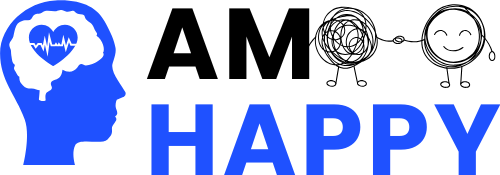Are you looking for support because your teenager is trying out drugs or alcohol?
Or perhaps you’ve reached a stage where you can’t overlook your adult child’s issues with prescription drugs, cocaine, or heroin?
Substance use impacts families from diverse backgrounds and is causing more harm than many realize. Statistics reveal that drug use, including alcohol, continues to affect households significantly. The misuse of prescription drugs has become a national crisis. The positive aspect is that there are now many available recovery resources.
Below is a list of valuable resources that have aided many families.
1. Invitation to Change Groups for Parents
“The Invitation to Change Approach© (ITC) is a comprehensive support framework grounded in research and compassion, created for families and loved ones of individuals battling substance use issues. Each chapter of this workbook covers a main ITC topic—such as Understanding Behaviors, Boosting Positive Actions, and Individual Needs—and includes practical activities for practice.”
New participants are invited to join our group starting on August 19, 2024. If you would like to register, click here.
2. Partnership To End Addiction Recovery Resources
The Partnership for Drug-Free Kids Helpline offers recovery tools for parents worried about their children. Their services include an initial consultation with a trained counselor, followed by coaching sessions with a peer coach who empathizes with the struggles, setbacks, and feelings often experienced due to a child’s substance use.
Recognizing that every family is different, they will tailor a specific plan for you, providing the appropriate tools and resources to support your child, yourself, and your family. You can reach the helpline at 1-855-378-4373. It operates Monday-Friday, from 9 am to 5 pm ET. Support is also provided via live chat on weekday evenings and weekends, specifically Monday to Friday from 5-10 pm ET, and Saturday and Sunday from 12-5 pm ET.
3. Helping Families Help
The Helping Families Help platform employs a scientific method called CRAFT, which has proven effective for about 70% of families in encouraging their loved ones to pursue treatment. Research indicates that understanding CRAFT not only benefits family members’ self-esteem but also helps them get their lives back on track and enhances their relationships. All services listed through Helping Families Help are offered by CRAFT-trained providers who are part of the Helping Families Help Provider Network (HFHPN). This site provides numerous CRAFT resources, including support for families dealing with addiction, a directory of providers, group sessions, training and workshops, and domestic violence resources. Click here to discover more about Helping Families Help.
4. Learn about SMART Recovery for Friends and Family.
Additional recovery tools include support groups such as SMART Recovery for Friends and Family. SMART Recovery Family & Friends focuses on a research-based approach,“`html
Secular options like Al-Anon and the Johnson Intervention are available.
Currently, there are fewer live SMART Recovery meetings compared to other groups, but the number is increasing as awareness grows. They do offer regular Family & Friends meetings, both in-person and online, depending on your location.
The SMART Recovery 4-Point Program provides various tools and techniques for each aspect:
- Enhancing and Sustaining Motivation
- Dealing with Urges
- Managing Emotions, Thoughts, and Actions
- Living a Well-rounded Life
5. Regain Your Hope Online Course
Online courses are convenient for accessing information at your own pace. This course teaches evidence-based strategies that support your child’s recovery journey. It provides an actionable plan to encourage your child towards recovery. The course includes over eight hours of content, with modules on substance use, effective communication, self-care, boundaries, and more, alongside interviews with field experts. Plus, you’ll gain access to an online support group and monthly meetings with parents experiencing similar challenges. Click here for access.
6. Treatment Options
There are numerous treatment plans available since each situation is unique. Select a program tailored to your child’s specific needs, considering any underlying issues, their patterns of use, and their willingness to accept help.
According to the creators of Beyond Addiction, here are three essential questions to consider about treatment:
- Which setting is most suitable to start with (inpatient, residential, outpatient, etc.)?
- What level of treatment intensity is appropriate; how frequently will sessions occur?
- What treatment approach aligns best with your loved one (and what evidence supports that method)?
The SAMHSA Behavioral Health Treatment Services Locator is a valuable tool for exploring treatment options. It is one of the most comprehensive search engines available and has received recent updates. Make sure to do your research to identify the most suitable form of treatment.
Additionally, here’s a link to Questions to Ask Treatment Providers by the Partnership for Drug-Free Kids and TRI. For further information, see Finding a Treatment Provider.
7. Medication-Assisted Treatment
Medication-assisted treatment (MAT) is an option for individuals battling substance use disorders, particularly involving opioids. Medications like naltrexone (Vivitrol), buprenorphine (Suboxone), and Methadone are prescribed to lessen cravings that may hinder recovery. Research has demonstrated the life-saving potential of these medications.
Dr. Ken Saffier, MD, who treats patients with substance use disorders in Northern California, outlines the benefits of opioid “maintenance” as follows:
- Enhanced treatment retention
- 80% reduction in drug use and criminal activity
- 70% drop in mortality rate
- Lower rates of Hep C and HIV transmission
- Reduced relapse rate compared to the 80-90% without MAT
These medications require a doctor’s prescription and may not be suitable for everyone. Nonetheless, they can assist your child in rebuilding their life and alleviating concerns about relapse.
8. Keep Naloxone Accessible.
If your child is dealing with opioid issues, such as with heroin, Vicodin, OxyContin, or Percocet, it’s advisable to keep Naloxone available. For more information, read How Naloxone Can Help Save Lives; it can help avert a fatal overdose. Always call 911 in emergencies. Naloxone can be administered by a trained family member in crisis situations.
This medication should not replace emergency medical care and should be given by a trained friend or family member first responder. After receiving training for administering the medicine, you can purchase Naloxone without a prescription at various pharmacies, including Walgreens, CVS, Rite Aid, Target, Walmart, and independent drugstores.
Be alert for signs that may indicate a possible overdose:
- Clammy skin that no longer has its usual color
- Blue-tinged lips and fingertips
- Non-responsiveness to their name or firm knuckle rub on the sternum
- Irregular or absent breathing
- Deep snoring or a gurgling sound (often called ‘death rattle’)
- Slow heartbeat or no detectable heartbeat
Check out another resource for Naloxone.
“““html
9. Join the Free Facebook Group for Parents of Children Facing Drug/Alcohol Challenges.
Being part of a community can reduce feelings of isolation. If your child is having difficulties with drugs or alcohol, please join our Facebook group for Parents of Children Struggling with Drug/Alcohol. This platform is designed for parents to connect, offering encouragement and support to navigate their child’s substance use together.
The group has over 4,900 members, providing a supportive space where parents can assist each other. It is exclusively for parents of teenagers or young adults dealing with such issues.
I hope these recovery tools serve as a helpful starting point for you and your child. Remember that every family’s journey is unique, so take the time to find what works best for you both.
10. Explore My Resources on CRAFT & ITC.
This section features a variety of evidence-based tools. It provides an overview of the CRAFT (Community Reinforcement and Family Training) method, along with links for further reading. The page includes articles, resources, and book recommendations. Click here to find out more.
By utilizing these resources, you can support your child’s transformation toward a healthier life.
Select the options that resonate with you and reach out to learn more. I would love to hear your thoughts on which recovery resources have helped you.
Access evidence-based resources to assist your child with kindness and compassion, which may encourage positive change.
Also, consider exploring my online course, Regain Your Hope, which offers a structured plan to support your child, reinforcing that change is possible.
Don’t miss out on my book, The Compassion Antidote: A Path to Change for You and Your Child Struggling with Addiction.

“`








